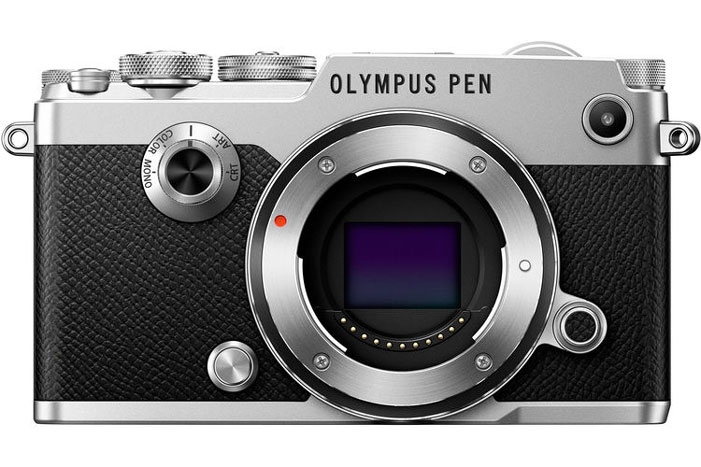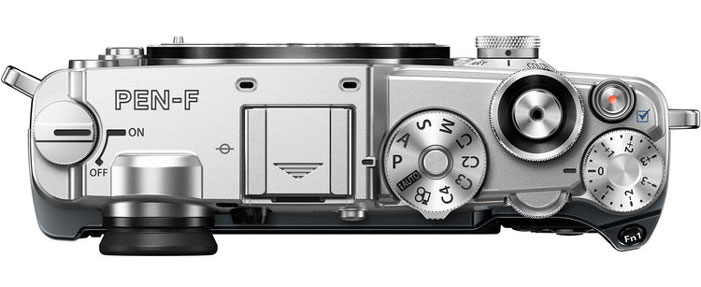There’s always a better time to buy a digital camera. Something better, faster, technically more advanced is always around the corner. Not so this time. Chapeau Olympus to the Olympus PEN F. What an iconic piece of beautifully crafted and designed precision engineering. A tribute to the original PEN F produced between 1963 to 1966, which was followed by the PEN FT and PEN FV. We might see their digital incarnations further down the road, but what does it matter. With the digital PEN F Olympus crafted a timeless jewel of photographic beauty. Pricey for $1,200, yes, but still a good deal because you can hold on to it for years, without being tempted to upgrade again and again. This timeless film camera with digital guts encapsulates time.
If I’d be in the market right now for a quality camera with a proven glass lineup and that certain something, the PEN F would be it. Olympus’ 5-axis image stabilization system is the best out there, period, full stop, and Zuiko glass offers a wide range of fast and small prime and zoom lenses. Featuring a physical design inspired by the original PEN half-frame 35mm film cameras, this compact PEN F incorporates a range of manual control dials for intuitive photography.

The PEN F is actually the camera Olympus should have launched first when they created the digital PEN series with all nice cameras, yet the OM-D E-M series looks were a bit futuristic and operation always reminded me of a fiddly gadget. Always good reliable output, yet certainly borderline in regard to optimal ease of use in terms of buttons, locks, dials and functions. At 12.5 x 7.2 x 3.7 cm, the F is slightly smaller than the OM-D E-M5 (12.2 x 8.9 x 4.3 cm). Yet the latter one is busy, if not crowded, and doesn’t offer the F’s intuitive manual control dials layout for smooth and easy operability.
The new PEN F is clean and minimalist all over. Pair this F with a nice prime lens, and what else could you wish for. The body looks of high metal quality, no creaking and rattling plastic parts, and you get six (!) metal dials which will take a bit of getting used to coming from previous Oly cameras. Most interesting: the retro knob on the front allowing you to select post-processing options. Something I’d never use, post-processing is post-processing, why limit an in-camera photograph to certain filters and profiles. Plus the distinct on/off dial, clearly reminiscent of a good old rewind knob / crank to tighten film.

Even for RAW shooters who couldn’t care less about JPEG options, that front knob adds the camera a certain extra. Just wish it would be neutral and Fn-customizable. Can’t have everything, can you. This camera looks and feels right, and most likely it responds well. Olympus UI offers a myriad of customizations, but to me the most rewarding photographic experience is to not have to finger around in the menu all the time. Pure button and dial controls, no distraction by on-screen notifications and commands, and that’s exactly what the PEN F seems to offer.

As I’m not too zealous about down-to-the-pixel-peeping analysis of specific IQ quality a camera delivers, these few thoughts here are more about the overall experience the PEN F delivers, and less about anal tech analysis. Today each and every single camera is able to deliver outstanding results. Blame the photographer, stupid! This modern F certainly is no hipster jewelry. It offers what the social media crowd wants, but it’s high time to finally put the jadedness about JPEG shooters to rest. Need RAW? Good for your. I rather go out shooting than spending hours in front of the computer screen trying to lock in the perfect RAW post-processing. But that’s slippery dogmatic territory.
The PEN F viewfinder? 2.36m-dot OLED, not absolute state of the art. No weather-proofing? I anyways never shoot when raindrops might flow down the front lens element and distort captures. Multimedia recording abilities with built-in Wi-Fi? Likely not everyone’s priority. A 20.3MP Live MOS sensor? Fanboys like anything anything, but interestingly the F also offers High Res Shot mode that composites eight images into a single frame to effectively produce a 50MP image. Add an electronic shutter that can be used for absolutely silent operation and a relatively large 3.0″ touchscreen.
Here what some hands-on reviewers say about the PEN F, a hybrid camera, as classic as modern-day — DP Review calls it “history repeating,” and boy do I agree with the front dial customization:
Probably the most interesting aspect of the PEN F is its new 20MP sensor. This is the first time we’ve seen Olympus use a sensor with more than 16MP in any of its Micro Four Thirds cameras. And though we have not had the chance to spend a ton of time with the Olympus PEN F, first impressions of image quality are largely positive. Shutter shock has been an issue we’ve encountered with recent Olympus Micro Four Thirds releases, especially at speeds around 1/60 and 1/80 sec, but judging from our initial testing, this issue appears to have been resolved on the PEN F.
From a design standpoint, the camera is gorgeous to look at. Ergonomics are also terrific, with ample custom buttons, plenty of control dials and a comfortable, grippy design. Despite the annoying lack of weather-sealing, the overall build quality is also quite solid, thanks to the camera’s magnesium alloy and aluminum chassis and well-machined dials. The only aspect of the design we question is the lack of customization on the new front creative control dial. We get the appeal of offering creative controls like Art Filters as well as Color and Monochrome profiles, in one single, easy-to-access place on the camera. But we fear for RAW shooters, this potentially quite useful control point will be essentially wasted.
All in all, I enjoyed shooting with the PEN F. It’s sized right, feels right, and responds well. The camera part just gets out of the way and lets you concentrate on shooting. Sure, the EVF feels a bit dated and grainy in comparison to the Leica SL, but for the most part, it’s good enough even in bright light. It doesn’t keep you waiting. Image quality appears to be good enough (subject to assessment via my normal ACR workflow) and overall, the camera represents a solid update to Olympus’ M4/3 offerings. I’m left hesitant on only two things: firstly, the price. This is not a cheap camera, and not only is it not a cheap camera, at this price, you have to start to give other options like the Sony A7II and Nikon D750 a serious look. Both of these cameras offer significantly higher image quality potential, too; though in practice, the image quality differential may be less than you’d expect because of the effectiveness of Olympus’ stabilization and the size / accessibility of small and fast lenses.
Finding out that the image quality produced by the PEN F is only slightly better than E-M10 Mark II on the whole basically toned down the level of excitement I was in when I was reviewing the camera.
The PEN F has done so many things right such as the super fast AF and built-in large and sharp EVF. This is the kind of camera that is made to lust for: beautiful design blended with great functions and shooting capabilities.
In the nearly seven years since its first PEN, much has improved. The slow, new fangled mirrorless camera has evolved into a device that rivals DSLRs. The technical improvements were inevitable. The design and build quality improvements are what delight. There are many excellent cameras. Most of them take great photos. What separates them is usability and how they make you feel (…)
Olympus has done an admirable job re-imagining the PEN into a new direction. While the OM-D has superseded much of the traditional PEN market, this new PEN F ups the ante. I was surprised how much I like it and that’s coming from an experienced Olympus user that already has access to much of the newest features (…)
Finally, as you may know, I own a lot of cameras. Each has its strengths and weaknesses. But when all is said and done, the Olympus compares favorably to all the cameras I own. The Olympus is my go to camera for everyday needs and the one I bring with me on my business trips and vacations. Ultimately, I guess that’s the biggest testimonial I can give.
There’s more to the PEN F than just retro styling. Olympus made sure there are no visible screws (…) There’s a lot going on here, but it’s done in such a careful way that the PEN F doesn’t look as garish or crowded as some of the cameras in Olympus’ OM-D line.
Canon and Nikon have fallen behind the trend of mirrorless cameras, and that’s left room for companies like Olympus and Fujifilm to create really attractive cameras at nearly the same price point as an entry-level DSLR. The new PEN F will be another weapon in the Olympus arsenal, but it also might just be its best one yet.
In a market where basically every camera is “good enough,” choosing a camera is about more than just the spec sheet. Olympus has always understood this, as Yoshihisa Maitani’s original PEN F was compact and capable, but also beautiful. The reborn version holds true to that, and it is certain to find more than a few fans — if not a legacy of its own.
+++ You can order the Olympus PEN F, available in silver and black, from B&H Photo, Adorama and Amazon.


